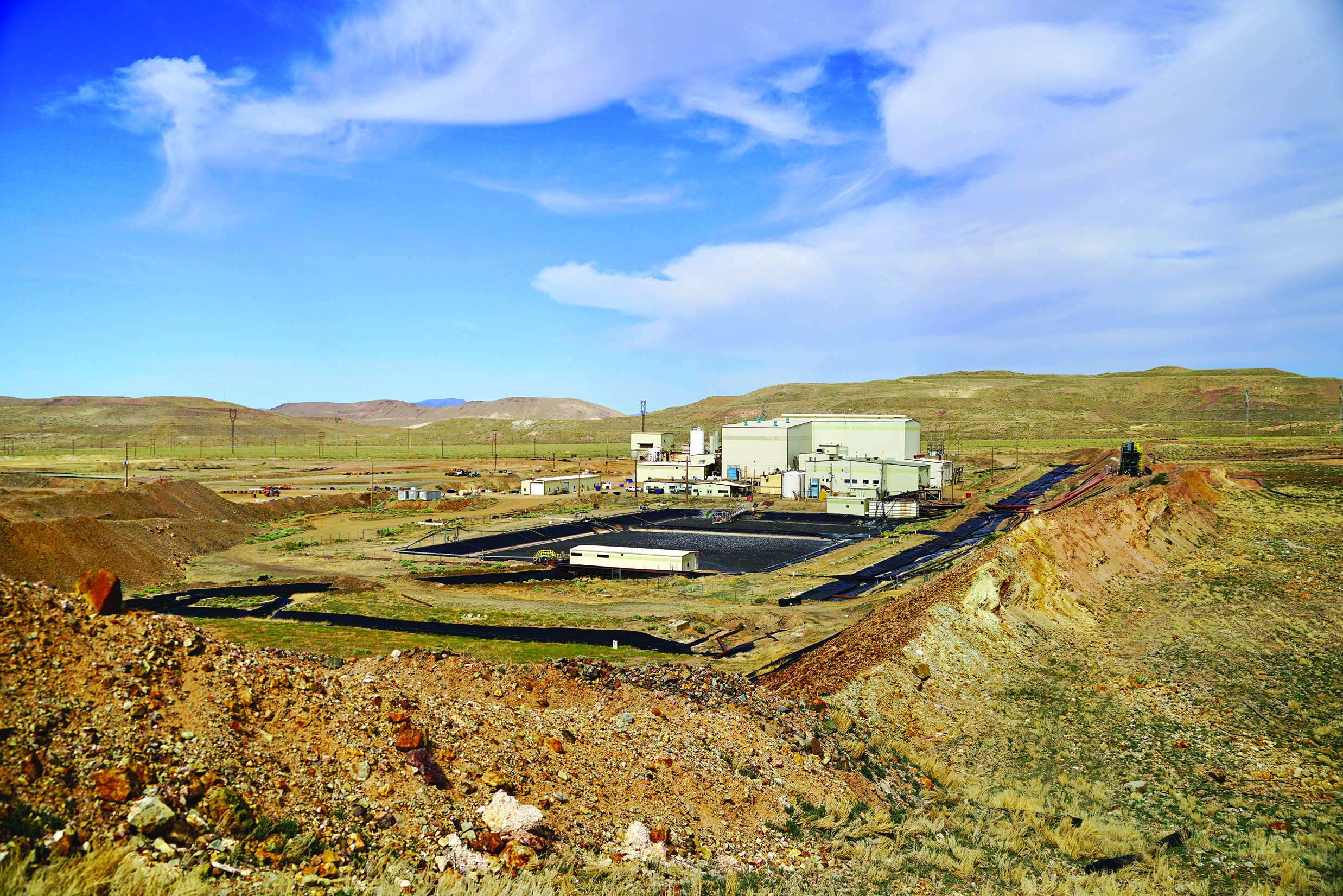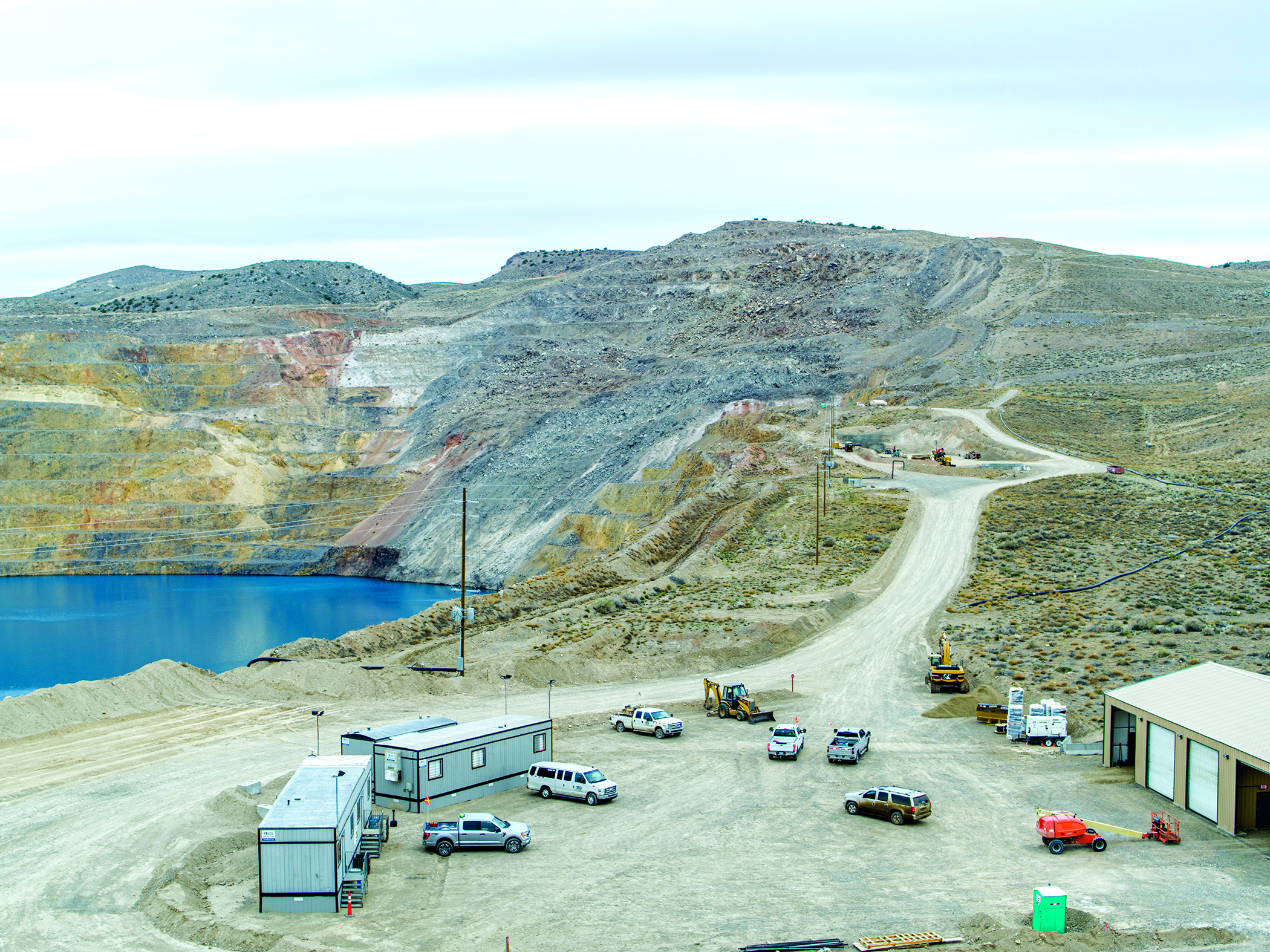 Nevada-based gold miner makes steady progress with development and growth plans
Nevada-based gold miner makes steady progress with development and growth plans
By Steve Fiscor, Editor-in-Chief
i-80 Gold has made significant progress with its advanced-exploration, development and production initiatives at its Granite Creek, McCoy-Cove, Ruby Hill, and Lone Tree operations. During February, the company also added the Paycor property located near Eureka to its portfolio.
Underground development is advancing at the Granite Creek mine, which was formerly known as the Pinson mine. Working on five levels, miners have steadily improved production rates and as they become more familiar with the geology and grade, the company can update its models for the orebody. i-80 drove a decline at the McCoy-Cove property, and they have established an exploration drilling platform at depth to evaluate the orebody for the Cove mine. Permitting for the dewatering program will begin soon.
A detailed engineering study is underway at the Lone Tree operation to evaluate the re-commissioning of the Lone Tree autoclave. Currently, i-80 has a toll milling agreement with Nevada Gold Mines (NGM). In the long run, however, the autoclave at Lone Tree will allow i-80 to become self-sufficient as far as recovering gold from refractory (sulphide) ore. Gold is currently being recovered at the property through a residual leach program.
Gold is also being produced from a residual leach program at Ruby Hill while exploration drilling continues to define and expand mineralization in multiple zones. i-80 is completing a preliminary economic assessment (PEA) while metallurgical work and associated permitting is being advanced for underground development and processing planning.
“Our goal is to become the premier mid-tier gold producer in Nevada’s Great Basin,” said Matt Gili, president, i-80 Gold. “We have a great Nevada-based operations team, which is very focused on the three mines and the autoclave and bringing those into production. We also have a highly-skilled exploration team that has made several key discoveries, including the South Pacific zone at Granite Creek and the Hilltop base metals at Ruby Hill.”
Gili is passionate about safety. For six years he served as the managing director at the Palabora Mining Co., before joining Oyu Tolgoi as COO for three years. Both are underground block-caving operations. His career path eventually led him to Barrick Gold in Nevada before joining the executive team at i-80 Gold. “It’s very important to create a culture that instills good safety and health practices in our organization,” Gili said. “I’ve seen firsthand how poor safety practices can impact an organization and more importantly the mineworkers and their families.”
From experience, Gilli also understands the benefits that multiple operations bring to a company. A company that relies solely on a single asset could face serious problems if it experiences difficulties, he explained. “We will eventually have three different ore streams feeding an autoclave, which will give us a little flexibility,” Gili said.
Development Advances at Granite Creek
Four levels have now been completed at Granite Creek accessing the Ogee Zone and mining rates continue to ramp up. A fifth level is now under development which will extend to the northeast to access the South Pacific Zone. A dedicated drill bay has been completed on the 4th level and surface drilling has resumed to allow the company to better define the South Pacific Zone in advance of its development.
“Granite Creek is really starting to come together,” Gili said. “Coming off the bottom of existing operations, we have established four sublevels, and we are making the turn now on a fifth. We are starting to understand the orebody. We were pleasantly surprised by the grade. It’s not particularly continuous mineralization, but it’s proving itself to be easy to mine. The ground conditions are significantly better than we anticipated.”
Development and mining rates at Granite Creek have increased. The Ogee Zone 4445 Level has mined 10,613 metric tons (mt) with a grade of 14 g/mt of gold for a total of 4,768 oz of gold. The 4490 Level has mined 10,874 mt at 11.1 g/mt, which amounts to 3,870 oz of gold. Grade reconciliation will allow the company to adjust the PEA with actual numbers, which will be used to complete an updated resource estimate and feasibility study.
Mining in the Ogee Zone continues to encounter a significant amount of oxide mineralization and i-80 has negotiated an ore sale agreement for this material with a third-party. High-grade refractory mineralization is being trucked to the Sage plant at NGM’s Turquoise Ridge mine.
“We continue to sink the decline down on the Ogee Zone and we’re right at the turn with that fifth sublevel,” Gili said. “This sublevel will allow us to access the South Pacific Zone, which is several hundred meters away. At that point we will be essentially mining two deposits. It’s about headings. Your mining rate is a function of how many active headings you have.”
The grades coming back from South Pacific are consistent with the grades they are seeing in the Ogee Zone at that depth. “South Pacific does appear to be almost entirely refractory with very little oxide, which suits our toll milling agreement with NGM,” Gili said.” And of course, the refractory ore also justifies the eventual recommissioning of the Lone Tree autoclave.”
Installation of a sixth dewatering well is nearing completion, which is expected to lower the water level and contribute to accelerated development and mining rates. Prior to completing a feasibility study for the underground mineralization at Granite Creek, i-80 will complete additional surface and underground drilling to better define the South Pacific mineralization.
Underground Exploration Begins at McCoy-Cove
The construction of the Phase I underground decline and exploration drift was recently completed at the McCoy-Cove property. A 40,000-m, underground definition drill campaign is underway, and is already showing some extremely positive initial results. The company said it has demonstrated strong continuity of mineralization with consistent high-grade gold mineralization.
“The decline for the underground exploration drilling platform does not start in the Cove pit,” Gili said. “Instead, it starts outside the pit and wraps around the west side of the pit. We have established a 1,200-ft long drill platform. The elevation of the exploration platform is a few feet higher than the water table. So far, the drilling team has completed 23 of 115 holes.” The information generated from this drilling campaign program will be used to create detailed mine designs for a feasibility study and the future development of the Cove underground mine.
The next stage at Cove will be dewatering, Gili explained. To support full mine permitting and long-term dewatering plans, piezometers have been installed to monitor water flow.
With a grade of 10.9 g/mt, Cove represents one of North America’s highest-grade development-stage gold projects with indicated resources of 351,000 oz of gold and 943,000 oz of silver, and inferred resources of 1.35 million oz of gold and 2.57 million oz of silver.

The Cove exploration decline starts outside the pit and wraps around the west side. (Photo: i-80 Gold)
Defining the Ruby Hill Deposit
In February, i-80 acquired its southern neighbor, Paycor Minerals. “Our exploration team started to find significant base metal hits on the southern half of our land package and our neighbor to the south was focused solely on base metals,” Gili said. “So, we brought that land package together.”
i-80 has five main initiatives planned for Ruby Hill during 2023 including a residual leach program, a large-scale exploration drilling program, initial economic work for the planned Ruby Deeps underground gold mine, permitting to allow for the commencement of underground development and advanced metallurgical work for the recovery of gold and base metals.
A major multi-drill program is underway focused on expanding mineralization and testing several new exploration targets on the property including the FAD deposit and the Hilltop Corridor. “The Hilltop drilling program will further delineate base metals at Ruby Hill,” Gili said. “We will combine those efforts with another drilling program on the FAD deposit several kilometers to the south of Hilltop to produce our initial base metal resource report during the first quarter of next year.”
More recently, i-80 has applied for a permit to build a portal and begin mining off the Archimedes pit and they plan to eventually build a flotation plant to recover base metals. “We have the permit in place for the surface works at the Archimedes pit,” Gili said. “We’re now working on the permit for the actual underground excavation, which includes a portal and a decline. This will allow us to access both the underground high-grade gold, the 426 and Ruby Deeps to the northeast, and it will also allow us to head south and access the base metal components of Ruby Hill.”
Final deposit modeling and mine planning are being completed in advance of the release of a PEA for the Ruby Deeps gold deposit.
Re-commissioning the Lone Tree Autoclave
Hatch is completing an engineering study on the cost schedule and operating parameters for re-commissioning the Lone Tree autoclave. The Lone Tree autoclave was a monument, Gili explained. “It was a flagship for Santa Fe,” he said. “And, when Newmont bought Santa Fe, they continued to operate it until that pit was exhausted.”
Hatch is reviewing the cost and time to re-commission the autoclave as well as operating parameters, such as the ore feed capacity, the alkalinity of the ore, expected levels of reagent consumption, etc. Once all the parameters are identified and evaluated, they will determine an expected recovery rate.
The Lone Tree site between Battle Mountain and Winnemucca came with a significant amount of infrastructure. Today, i-80 runs its centralized assay lab out of the Lone Tree facility. “We have our centralized geologic labs at Lone Tree where we cut drill core and perform detailed geological logging,” Gili said. “Our corporate office is in Reno, but human resources, safety and underground engineering teams are all managed from the Lone Tree site.”
As far as manpower and talent, Gili said i-80 has been incredibly effective at recruiting top quality professionals. “We have an interesting value proposition for prospective employees,” Gili said. “We have a competitive compensation package. You need to be competitive in this region these days. We are also a ‘known commodity,’ meaning most of the executives, including myself, are known to the northern Nevada workforce. They have worked with us. They know how we operate, and they know the culture that we create within our organization.”
i-80 Gold might be small, but it has already created an envious ESG strategy. “It’s very focused, and focused on meaningful goals, goals that we can achieve,” Gili said. “We are not going to change biodiversity in northern Nevada, but we can better support our communities, especially education, STEM in particular.”
Gili said i-80 Gold wants to make the communities in which they operate, namely Battle Mountain, Winnemucca, and Eureka, more appealing. “It supports ESG initiatives as well as recruitment,” Gili said. “When we invest in the communities where we live and work, we are able to attract and retain our talent and foster good relationships with our stakeholders.
“We’re an operations focused company,” Gili said, “and we see the value in being really good, safe and environmentally sound gold producers in Nevada.”




